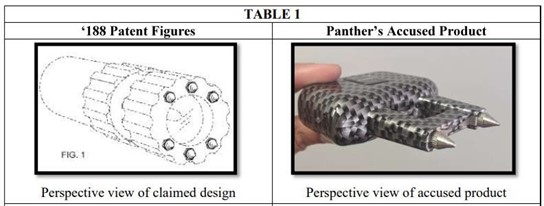Addressing for the first time the issue of whether bioequivalence data and in vitro testing can show that an abbreviated new drug application (ANDA) product with different immediate and delayed release portions infringed on a patent, the US Court of Appeals for the Federal Circuit upheld the district court’s finding of noninfringement. Galderma Laboratories, L.P. v. Lupin Inc., Case No. 24-1664 (Fed. Cir. Dec. 6, 2024) (Moore, C.J.; Linn, Prost, JJ.)
Galderma owns and markets Oracea® (doxycycline USP) 40 mg capsules, which are used to treat papules and pustules associated with rosacea. Galderma’s patents cover a unique once-daily oral formulation of doxycycline, combining 30 mg of immediate release (IR) and 10 mg of delayed release (DR) pellets. Lupin filed an ANDA to market a bioequivalent 40 mg doxycycline product, featuring 22 mg IR and 18 mg DR pellets, and using the same enteric polymer for the DR portion as Oracea®. Galderma sued Lupin under the Hatch-Waxman Act, alleging patent infringement.
Despite Lupin’s different pellet composition, Galderma contended that Lupin’s product effectively contained 30 mg IR and 10 mg DR because of a “weak enteric coat” on the DR pellets, causing early release of some doxycycline. Lupin presented two key pieces of evidence:
- A two-stage in vitro dissolution test at pH 1.1 and 4.5, showing some DR pellet release at pH 4.5.
- Bioequivalence data comparing Oracea® and Lupin’s product.
The district court ultimately ruled in favor of Lupin. Galderma appealed. The issue on appeal was whether Galderma’s evidence of bioequivalence and in vitro testing was indeed insufficient to establish literal infringement or infringement under the doctrine of equivalents (DoE).
The Federal Circuit agreed with the district court: in vitro testing and bioequivalence were not enough to establish literal infringement. Crucially, Galderma’s two-stage in vitro dissolution test didn’t accurately mimic in vivo conditions. The Court highlighted that the pH 4.5 environment used in the test wasn’t physiologically relevant for a fasted stomach, which typically has a pH between 1 and 2. Moreover, the bioequivalence data failed to address the differing proportions of IR and DR pellets. Consequently, the Court found no clear error in the district court’s factual findings.
Nor did the DoE save Galderma. The Federal Circuit applied two different tests: the function-way-result test and the insubstantial differences test. Under the function-way-result test the court is charged with determining whether the accused product performs the same function, in the same way, to achieve the same result as the claimed invention. Under the insubstantial differences test – as its name suggests – the court is charged with determining whether the differences between the claimed invention and the accused product are insubstantial.
Again, Galderma relied on bioequivalence data and its in vitro testing to argue that either DoE test was satisfied. The Federal Circuit was not persuaded, finding no clear error in the district court’s reasoning. As for the function-way-result test, the in vitro testing did not show that Lupin’s ANDA product used the same function or method as the asserted [...]
Continue Reading
read more

 Subscribe
Subscribe



